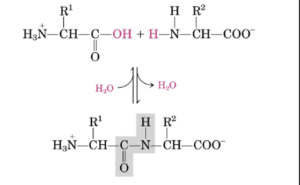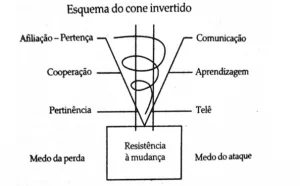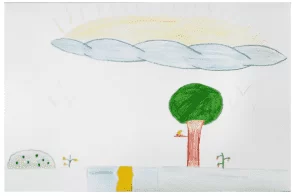PEDRO, Eliane [2], BEZERRA, Érica Juliana de Macedo [3], LEITE, Laurence Bittencourt [4]
PEDRO, Eliane Pedro; BEZERRA, Érica Juliana de Macedo; LEITE, Laurence Bittencourt. The mother-child Bond in light of psychoanalysis and the film "we need to talk about Kevin". Multidisciplinary Core scientific journal of knowledge. 03 year, Ed. 06, vol. 04, pp. 118-129, June 2018. ISSN:2448-0959
Summary
This article comes from a bibliographical research whose conceptual field is based on freud's psychoanalytic perspective-Lacanian psychoanalysis and some of his followers, on the subject proposed. The objective of this work aims at developing joints in the mother-child bond, seeking to go through the motions and the links become subject and as the same is constituted as subject of desire, performing analytical connections from the movie WE NEED to TALK ABOUT KEVIN, checking and tracing the paths of Kevin from Psychoanalytic theory and understanding of the mother-child bond expressed in the dynamics of the film based on the theory of psychoanalysis.
Keywords: Constitution of the subject, mother-child Bond, Psychoanalysis.
1. Introduction
This article discusses the construction of the mother-child bond in light of psychoanalysis. To this end, we covered the notions of motherhood, the ways of becoming subject and as the same structure within the psychoanalytic concepts. We use as the film analysis object we need to talk about Kevin, you have in your glance the murder of young people in a school in the United States, by the protagonist of the film, in case Kevin, teenage character who commits the Act on the eve of your 16 birthday years, and, at home, kill your sister and your mother's father, being the only survivor.
The film is not related to chronological form, uses flashbacks to reassemble the story of Eva and Kevin, that is, mother and son. We can follow this dense relationship and about the same "constructs" Kevin's personality, which shows flag in your earliest childhood that something you lack (and mother) in the mother-child relationship, allowing structure it.
What is intended, therefore, was to seek to analyze how the construction and the impasses of motherhood and how these motions will take part in the Constitution of the subject (in the specific case of the film, Kevin) and how it was built this mother-child bond, your relevance to the emotional, social and cognitive development, as well as the problems of this relationship and your impact in the formation of this subject over the course of your life.
Throughout the article, the reader will find five topics. In the first, made a point of addressing "the Constitution of the subject", in the following topics we hold forth the concept of "Subject" for Psychoanalysis, term gains relevance with injections of Jaques Lacan to psychoanalytic theory, in which he sought to explain how this subject to light of psychoanalytic theory. As a result, we speak about the mother-child bond, seeking to show the importance of the other as being fundamental and structuring of this subject in the following topic, we seek to explain the clinical structures and your importance to the Constitution of the subject. In the final paragraph dissertamos in order to list as all previously discorridos concepts throughout the article link in the analysis of the film already mentioned, especially in the structure of the character Kevin, seeking to understand and show how the same is subject.
2. The Constitution of the subject
There are cases that are marked down in history for having in their contexts, young people who end up murdering their classmates and/or parents or close relatives. When such acts occur, we wonder: how was the life of this subject? He demonstrated something which would give clues to such barbarity? It was a problem of family education. When parents have failed? The act committed would be something genetic or acquired? Questions like these always arise in the mind of the average citizen.
In General, the family of these young people will eventually suffer pressures of society, who long for a response, trying to find clues that show in that time of construction of the subject was such a "mistake".
To get an explanation that could account for acts like the exposed in the film already mentioned and starting from a theoretical perspective of psychoanalysis, we think it is important to distinguish between a central concept of the theory, which is the Oedipus complex. It is from him, according to psychoanalytic theory that the subject will structure and organize themselves while human.
On construction of psychoanalytic theory, already in 1897, Freud recounts the first traces and contours of the term Oedipus complex, however, will be only from 1910 that it becomes widely expressed.
Freud 1897 begins to plot the Oedipus complex through a dream with your daughter Mathilde. These first reports occurred in exchanges of letters with your friend Wilhelm Fliess.
Freud begins the letter to Fliess announcing a feeling soon discovered the source of morality, and follow a dream that refers to feelings "supercarinhosos" to your eldest daughter Mathilde. (MATTHEWS, 2004, p. 2)
Freud based the term Oedipus complex from the Greek play Oedipus Rex by Sophocles 406-496 Bce The piece talks about a prophecy from the consultation of King Laius (biological father of Oedipus) to Oracle, where the same Board that your son, Oedipus, will murder him and then will marry your wife, Jocasta. The outcome, therefore, is that Oedipus will kill your own father and marry your own mother. Freud bases the Oedipus complex from motions involving a triangle, father, mother and son. The child will have your wish directed, (in the case of the boy), to the mother figure, where the entrance to the other, represented by father figure will bring restlessness, anguish and rivalry of the child with this third.
Is target of all of us, perhaps, drive our first sexual impulse to our mother, and our first hatred and lust murderer, to our father. Our dreams in convinced that that's what is happening. King Oedipus, who murdered your father Laius and married Jocasta, your mother, simply shows us the realization of our own desires. (FREUD .1900, p. 179).
It is therefore from the Oedipus complex to see how the other will have a major role in the Constitution of the subject, where fundamental functions will be structured. According to Moreira (2004, p. 1), "is from the Oedipus that the subject will structure and organize your becoming." Thus, Oedipus will be wrapped and bring motions in family structures, and structuring element in the development of the subject.
2.1 the concept of subject in psychoanalysis
The concept of the Subject begins to be used within the psychoanalytic theory, by Jacques Lacan, French psychoanalyst and psychiatrist, where the same will propose that is for another mediation, other this, according to Lacan, is decisive in the Constitution of the subject, a time to be as such, this will need to divest (first on language, on the one hand), as well as leave the subjective position assujeitação the maternal desire for another, possible output when the input in the relationship between mother and son of another, a third, in this case, the father, who will have an important function, in these first links as a way to establish and develop our psychic apparatus, allowing the advent of the subject. It is through this another we can arise while subject.
For Lacan are subjected before our birth. Our name is an example of this submissiveness to the will of the other, and it is through language that we will borrow the realm of words and their signifiers that we determine and mark.
The concept of subject is not, therefore, the natural order, does not have a biological status, and, Yes, of course. That status can only be thought of by the insertion of the signifier father-name, where through this become absentees.
3. The mother-child bond
The construction of the mother-child bond in light of Psychoanalysis have in your Constitution the subject in your earliest prematurity. The human baby at birth is evidenced in your extreme helplessness, needing to be taken care of by another that will supply and relieve the first basic needs like hunger, sleep, pain, discomfort, etc. Such needs are expressed through crying, and that will be interpreted by the other (in this case, the mother, or who performs this function) as the search for deletion of these basic needs. In this search for need to be careful, the baby liable to language as a means of salvation, and create a loving bond with this that will meet these needs.
Freud (1950/1985/1989) emphasizes that the first experience of satisfaction marks in the psyche in such a way that every time some discomfort if presentifica, the baby tries to rescue such experience (satisfaction) for a hallucinatory. Why not indulge, the baby cries, claims the other somehow. However, this first experience is not fully represented, some of it is lost, there is a rest that persists without representation and is constituted as a hole where desire can arise.
For the baby to be immersed in a cultural and symbolic universe pre-existing already to your birth, it is necessary that another similar act as a reference and that the insert in the language. The mother will act in this relationship as another. Lacan (1957-1958) explains the role of the mother as the incarnation of the big Other, as it conveys a first time, next to the baby, the symbolic act of culture, and that will provide the first mirror through which he at once if aliena and is.
For Freud during the Oedipus complex the normal child is tenderly attached to the parent of the opposite sex, while the hostility is focused on the parent of the same sex. We follow (in a first attempt to bring the film chosen as object of study) that during the movie there is a reversal, Kevin bond in relation to mother's hostility and the father of benevolence.
In the Oedipus complex positive, in the case of the boy, we'll take a look at early a cathexis objetal regarding mom and the identification with the father, that only appears in your confrontational manner, at a time when the sexual desires of the child by the mother are accented. His identification with the father will assume an ambivalent intensity. The possibility of keeping the mother as love object will appear through the intensification of identification with the father. (MATTHEWS, 2004, p. 6).
We can think of in the family context in which Kevin is immersed, where identification with this dad puts him in a position to get your object of desire, the mother, thus demonstrating, as we can't escape the Oedipus.
4. Clinical structures in the Constitution of the subject
The term clinical structures in its early days is not reported in the works of Freud. The same will mention the term "structure", discussing the importance of meeting you so that the treatment could have your course.
According to the authors – and marine (2011)
Freud did not use very often the term structure and didn't even mention the term clinical structures; However, these are implicit in your work since its beginnings, regarding the importance of differential diagnosis for the conduct of the examination (2011, s/n).
The term Clinical Structures, in fact, will begin to be drawn and outlined by Jacques Lacan, where from your analysis and study of the concepts of structuralism begins to embroider the term Clinical Structures.
For both authors, Freud and Lacan, clinical structures are the ways with which the subject will structure before the motions of castration, of the Oedipus complex, the unconscious and infantile sexuality. The subject's immersion in psychotic or neurotic, perverse structures, will occur when the same during your training, is enveloped by fundamental figures engendrarão structuring your clinic.
The family context to which the subject is part brings structuring issues, as would even take in previous topics. The Oedipus complex is one of these concepts of extreme importance to the psychoanalytic theory, and the motions experienced in this Oedipal relationship will be part of the Constitution of the subject in your structure, whether it be psychotic, neurotic, or wicked.
The Oedipus complex offered the child two possibilities of satisfaction, an active and one passive. She could put themselves in the place of your father, the male way, and have sex with his mother, as had his father, in which case early would have felt the last as nuisance, or might want to take the place of his mother and be loved by the father, in which case the mother would become superfluous. (FREUD, 1923-1925, p. 104).
Within the structure of the subject, from the Oedipus complex, initially, the maternal predominant will function and will act in the form of providing care and satisfaction to the child, where the child believed to be an extension of this being, in this case, the mother; Already the father, inside the child's libidinal development, will be the bearer of the law, which will move the child to show that there is another beyond this initial fusional relationship with mom. The way this paternal function is presented, particularly the mother, will contribute to structuring your clinic.
What is essential is that the mother blows her dad as a mediator of that which is beyond the law and your whim, that is, quite simply, the law as such. It is the father, so how name-of-the-father, closely linked to the enunciation of the law, as all Freudian doctrine development on it announces and promotes. And that's what he is or is not accepted by the child as one who deprives or does not deprive the mother of your desire. (LACAN, 1957-1958, p. 197)
The child part of the principle that there is no anatomical difference between the sexes, that is, both have the penis, when you realize that the mother is a neutered and possessor of the phallus, not the child will be positioned in front of your imminent threat of castration by identifying itself with the figur the father as a way to keep yourself safe; already the girl realize that mom is a neutered and will turn to the father as a way to get what you lack, in both positions the entry of father figure will act in order to place the child in the sharing of the sexes and be responsible to move the child out of the dual relationship with the mother. The way the child will deal with this other entry and the castration complex the structure in order to move it in the structuring of neurosis, psychosis or Perversion.
Now, however, your acceptance of the possibility of castration, your recognition that women were castrated, put an end to the two possible ways of obtaining satisfaction of the Oedipus complex, once both entailed the loss of your penis – male as punishment and the girl as a precondition. If the satisfaction of love on the Oedipus complex the child should cost the penis, is bound to arise a conflict between your narcissistic interest in this part of your body and the libidinal cathexis of their parent objects. (FREUD, 1923-1925, p. 104).
As previously, would even take the castration complex has fundamental importance for the choice of the child in your subject position, provoking him into a clinical structures. In the case of the structuring of psychosis castration was not performed, the father figure that brings the ban and the law was presented to the child, in the absence of the inclusion of this other, promoting the separation, soon, so the child will not leave the dual mother-child relationship, Thus in the position and extent of maternal desires, not recognizing your own wish, getting alienated desire.
The construction of the Neurotic along when the input of another, the father figure, will take the child to realize that there is another beyond the dual mother-child relationship, and this prevents the full realization of the wishes of this child, putting her in the face with the castration, this one will bring the motions of the ban, deprivation.
In the Perverse structure the child visualizes the mother wishes one another beyond being the father figure that one, the child then places himself in the position of not recognizing this other while interditor your desires or holder of the maternal desires, being so, the child will be placed in a position to move to the maternal desires, rivaling the law, be it paternal, law or social law.
Clinical structures above discorridas, the entrance of the father figure on the dual relationship mother-child will have a key role, because the shape and intensity as the same is inserted into the mother-child relationship, whether in your default, absence or presence will cause the decisive for structuring clinical movement of the subject.
5. Playing the role of Kevin in the light of psychoanalytic theory
In this topic we intend to carry out the analysis of the film we need to talk about Kevin, seeking to interpret the film from the theoretical basis of psychoanalysis. The film uses flashbacks to reassemble Khatchadourian family history, composed of Eva, her mother, Franklin, the father, Kevin (16 years), son and main character and Celia (6 years), daughter and sister.
Eva (suggestive name, recalling the biblical Eve, of paradise in Eden) amid their memories begin to recall your story, taking us to meet the family Khatchadourian, from a fundamental element for the development of the story and that will turn on the past and present, the design of your eldest son Kevin.
Kevin is born at a time when Eva is at the peak of your professional career. Eva demonstrates apathy with the evolution of pregnancy, Franklin is the guy you want to and welcomes the son being raised. Eva resists giving birth to Kevin during childbirth. In their first months of life Kevin demonstrates intense crying, Eve demonstrates exhaustion and not knowing how to satisfy the called Kevin, demonstrating difficulty in exercising the maternal function.
With the course of the film we can realize that the mother-son relationship becomes dense, the dialogue between Eva and Kevin brings clearly and told how the mother did not wish this son and how much the same was happy before your birth. Kevin to develop demonstrates imposition (demand) to maternal desires, seeking the attention of Eva following the opposite path requested by the same, with an attitude as if he wanted to claim the look and the maternal desire. Lacan writes:
What you want the subject? It's not about the simple appeal of attention, the contact or the presence of the mother, but the appetite of your desire. From that first symbolization which States the desire of the child outline-if all the subsequent complications of symbolization, to the extent that your desire is the desire of the desire of the mother. (LACAN, 1957-1958, p. 188).
There is a scene during the movie to which we visualize the relationship between mother and son, Kevin to be sick is the maternal care, where is fondled and cherished by Eve, who then read a history of bow and arrow, object to which Kevin will practice during your childhood and dolescência, and that will be the instrument that Kevin will use during the massacre.
Celia, the sister of Kevin is generated in another moment of life, maternal desire and the basic needs of the child are met, there is a mother-daughter bond produced by Celia and Eva, in opposition to the Constitution of Kevin. The entry of this new being in the film highlights the importance of maternal position during the Constitution of the subject, we visualize the position of this mom in the development of Celia and Kevin, in moments and different postures, and entering in subjects with structures and positions different. According to Lacan (1957-1958, p. 186) "the first reality interface design between mother and son, and that's where the child experiences the realities of your first contact with the medium.
In your final act, Kevin expects the mother out of the House, and the bow and arrow (gift from your father) kills your father and sister; then goes to school, and to reach the school institution kills some of his colleagues. The only survivor of the massacre committed by Kevin will be the mother figure that during the movie brought Kevin your biggest dilemmas during your construction and Constitution. What's the point of Kevin? We realize that finally he got the look that both claimed in your development. When passing the Act, to commit the murders, he draws the attention of the mother, can you hook your look.
After the acts committed by Kevin, Eve is judged and placed in the place of a being who couldn't be a mother, suffering physical and psychological aggression by neglecting the construction and development of Kevin, being seen as taking the blame or even having a greater burden of guilt for s acts committed by your son. We visualize that Eva receives the aggressions in order to penalise and assume that if something is missed Kevin.
In its final scenes, the film features moments when Eve tries to reassemble in Kevin's room details, as if the same search-if you rebuild something in this relationship. Eva conducts the visits to the prison where Kevin is, during the first visits, there is no dialogue or looks, and the eve of two years of the event, there's the final dialogue where Eva asks: "you don't look happy?" Kevin responds: "Some day I used to be happy?" Eva: "what's the point of your act?" Kevin: "I thought I knew, now I'm not sure".
Final considerations
The present article had as main objective to discuss on how to give yourself the Constitution of the subject in the light of Psychoanalytic theory. We seek to trace the paths, from the theoretical point of view, that leads us to become subject of our desire, desire this that originates from another, with this, we visualize how the family context will structure this one and will be trainer of this subject desired.
The Constitution of the subject in the light of psychoanalysis seeks to appreciate the various factors that go through the construction of the subject, the mother-child links, the father figure, the familiar context, these elements will move the child into the culture and the community which belongs, this complex family background will be of fundamental importance for the subject under construction may be in interaction with each other, and with others.
We use as a tool to expand and apply the psychoanalytic theoretical construction that served this article, analysis of the film we need to talk about Kevin, seeking understanding through excerpts involving, in particular, the central characters the tragic drama, in case Kevin (the son) and Eve (your mother), in order to better understand what acts (on family dynamics) and which factors indicate how this guy (Kevin) if structured and placed himself in the world. However, it was not our intention to answer the why (s) Kevin in your final act killed their schoolmates, your sister and your father, leaving as the only survivor your mother; What we seek was, traveling the paths of the Constitution of the subject, from the theory, taking the reader to question the following questions before such acts: how was the life of this subject? What the family context that it was constituted as subject? The question we're not seeking to find us guilty or innocent, just trace the paths to understanding and construction of the subject who commit such acts.
Finally, we can ask, what would be the structural position of Kevin, in the light of psychoanalytic theory discorrida over this article? In what structure frame it? Even though the risk of an analysis from a movie, like we're doing a psychoanalysis rigorously applied, we found important stand or propose any chance. And our hypothesis is that the character Kevin in front of his family relationships and their dilemmas, can be framed as a Perverse structure, where we visualize that Kevin, while notices or demonstrates your earliest childhood since the object of mom's desire is beyond himself, on the other hand, gives clear shows that does not recognize, however, the father figure as the subject interditor of his desires, nor the law, Kevin in your final act infringes the law.
References
FREUD, Sigmund. The interpretation of dreams. Leipzing: Standart, 1900. 226 p.
FREUD, Sigmund. The future of an illusion, the malaise in civilization and other works. Standart, 1927-1931.
FREUD, Sigmund. The ego and the Id and other works. Standart, 1923-1925.
LACAN (1957-1958). Seminar, book 5: the formations of the unconscious. Rio de Janeiro: Jorge Zahar, 1999.
Tope Lima Gomes. Mother woman: the circuits of love desire and jouissance. 2006. 434 f. Thesis (doctoral)-psychology course, Institute of psychology, University of Sao Paulo, Sao Paulo, 2006.
Moreira, Jacqueline de Oliveira. Oedipus in Freud: the movement of a theory. 2004. 9 f. Thesis (doctoral)-psychology degree, psychology, Puc-sp, 2004.
SADALA, Gloria; MARTIN, Maria Helena. The structure in psychoanalysis: an enunciation since Freud. Agora (Rio J). Vol 14, number 2. Rio de Janeiro, 2011.
[1] Paper presented to the University Rn-UnP, as part of the requirements for obtaining the title of Psychologist.
[2] Graduated in psychology from the University Brazil
[3] Graduated in psychology from the University Brazil
[4] Master Advisor in Language study. Professor at Universidade Potiguar




